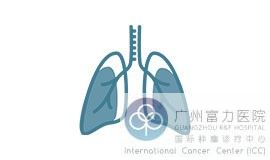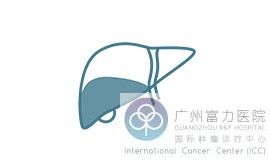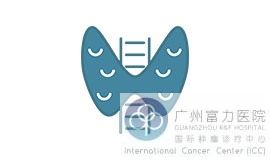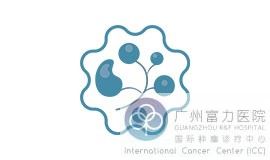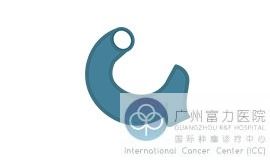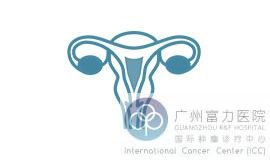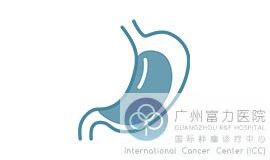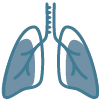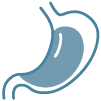—— Duodenal cancer ——
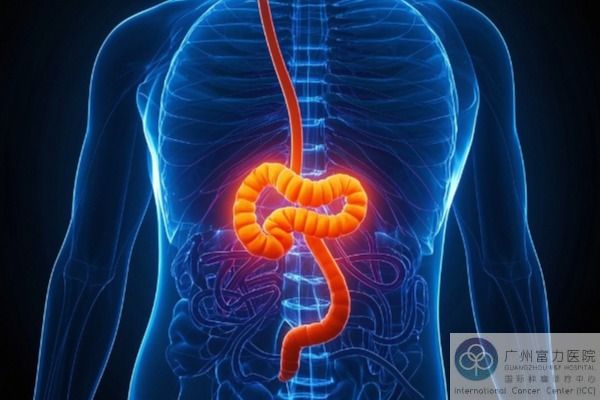
Duodenal cancer is a malignant tumor of the digestive system with a low incidence, accounting for only 0.04% to 0.50% of gastrointestinal malignant tumors. Early symptoms are not obvious, and common late symptoms include upper abdominal pain, abdominal distension, nausea, vomiting, anemia and jaundice. Carcinoid tumors may also be accompanied by carcinoid syndrome.
According to 2020 data from the World Health Organization, colon cancer is the third most common cancer in the world, with approximately 1.9 million people diagnosed and more than 900,000 deaths from the disease each year, and its mortality rate is second only to lung cancer.
The treatment of advanced and late-stage duodenal cancer is complex and requires comprehensive consideration of the patient's individual condition, cancer stage and metastasis, and the use of multiple methods such as surgery, radiotherapy and chemotherapy to control the disease, prolong life and improve quality of life. The possibility of cure is difficult to simply determine.
For more cancer knowledge, please click on the online doctor for consultation
Although the cause of duodenal cancer is not yet fully understood, studies have shown that certain specific factors may be closely related to its pathogenesis. Some substances in bile and pancreatic juice, such as secondary bile acids such as lithocholic acid, are considered potential carcinogens. In addition, familial polyposis and benign epithelial tumors (such as villous adenomas) are also associated with the occurrence of duodenal cancer. Studies have also found that the malignant transformation of duodenal ulcers or diverticula and genetic background also affect the development of this disease to a certain extent.
These findings not only provide us with new perspectives to gain a deeper understanding of this complex disease, but also point the way for future research. By exploring the interaction mechanism between these factors, we may be able to open up new paths for the prevention and treatment of duodenal cancer. At the same time, this also reminds us that when facing health problems, we should pay more attention to individual differences and the complex biological basis behind them.
Duodenal cancer is a rare but serious malignant tumor. According to its origin and pathological characteristics, it can be divided into several types: duodenal adenocarcinoma, duodenal carcinoid, duodenal leiomyosarcoma, duodenal malignant lymphoma
Introduction to the TNM staging system for duodenal cancer
Duodenal cancer staging is based on the TNM system of the International Union Against Cancer (UICC) and the American Joint Committee on Cancer (AJCC), which is divided into the following three indicators:
T (primary tumor): depth of tumor invasion.
N (lymph node metastasis): local lymph node involvement.
M (distant metastasis): whether there is distant organ metastasis.
Duodenal cancer is subdivided into the following stages:
Stage 0: Tis N0 M0, carcinoma in situ, without invasion of surrounding tissues and metastasis.
Stage I: T1 N0 M0, invasion of mucosa or submucosa, no metastasis.
Stage IIA: T2 N0 M0, invasion of muscle layer, no metastasis.
Stage IIB: T3 N0 M0, invasion of the intestinal wall membrane, no metastasis.
Stage IIIA: T1 - 3 N1 M0, with ipsilateral/regional lymph node metastasis and no distant metastasis.
Stage IIIB: T4 any N M0, or any T N1 M0, invasion of surrounding structures or lymph node metastasis, without distant metastasis.
Stage IVA: Any T Any N M1, distant metastasis occurs, regardless of the degree of local invasion and lymph node status.
The diagnosis needs to be made after comprehensive evaluation by a professional physician based on clinical manifestations, imaging (such as CT, MRI) and pathological examination results.
(Note: Tis means carcinoma in situ; N₀ means no lymph node metastasis, N₁ means 1-3 lymph nodes are affected, and N₂ means ≥4 lymph nodes; M₀ means no distant metastasis, and M₁ means metastasis.)
For more cancer knowledge, please click on the online doctor for consultation
—— Traditional treatment techniques for duodenal cancer ——
Traditional treatments for duodenal cancer
Surgery: Surgery is used to remove cancerous tissue and any lymph nodes in the neck that may have metastasized.
Radiation therapy: It can be used as a single treatment or combined with other treatments such as surgery or chemotherapy.
Chemotherapy: often used as palliative treatment for advanced cancer that is inoperable or has distant metastasis;
—— New anti-cancer technology for duodenal cancer ——
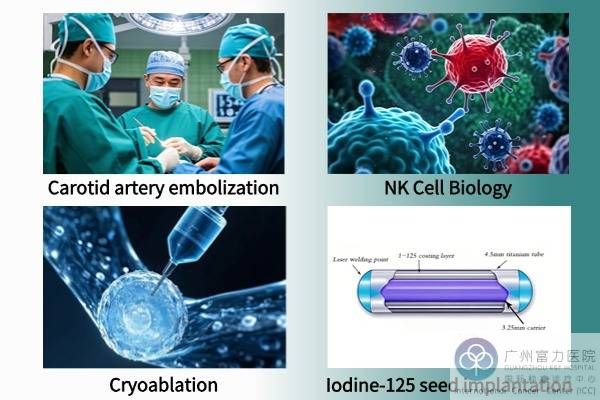
What is transarterial embolization?
Transarterial embolization is a minimally invasive technique that "starves the tumor to death." Under the guidance of DSA (digital subtraction angiography), the physician inserts the catheter into the tumor-supplying artery through femoral artery puncture (only a 2mm incision) and injects embolic agents (such as drug-loaded microspheres and iodized oil) to block blood flow. The tumor necroses due to ischemia and hypoxia, while the surrounding normal tissues are almost intact. If combined with chemotherapy drugs (i.e. TACE), a double blow of "cutting off food supply + poisoning" can be achieved simultaneously, and the efficacy can be increased by 2-3 times. It is done under local anesthesia, leaving only tiny pinholes in the skin.
What is NK cell biological immunotherapy?
NK cells (natural killer cells) are the "vanguard" of the human immune system. They can quickly identify and destroy cancer cells and abnormal cells infected by viruses without having to "remember" the enemy in advance.
What is cryoablation?
Cryoablation is a minimally invasive technique that physically destroys tumors through "extremely low temperatures". Under the guidance of CT or ultrasound, the doctor accurately punctures a pen-thin ablation needle into the tumor and releases argon gas to instantly cool the tumor to -140℃~196℃. The extremely cold environment freezes cancer cells into ice crystals, and the cell structure completely collapses. Subsequently, the helium gas is quickly heated to 20°C~40°C, and the alternating hot and cold "temperature difference attack" further destroys the residual cancer cells without damaging the surrounding normal tissues.
What is iodine-125 seed implantation?
Iodine-125 seeds are a type of "mini-radiotherapist" that is only 4.5 mm in size and contains the radioactive isotope iodine-125. After accurately locating the tumor using imaging technology (such as CT), doctors use a fine needle to implant dozens to hundreds of iodine-125 particles into the tumor. These particles deliver low-dose radiation over a continuous period of time (about 6 months), directly destroying tumor cells while maximizing the protection of surrounding normal tissue.
In addition, we also have the following tumor elimination technologies:
Radiofrequency ablation, cytokine therapy, CAR-T cell therapy, microwave ablation, immune checkpoint inhibitor PD-1/PD-L1 therapy, monoclonal antibody therapy...
—— Enter the technology area to see which technology is more suitable for you
—— Duodenal cancer patient story ——

Chen Zhiqiang (Malaysian patient)
"The laparotomy in Malaysia made me feel worse than death, but the nanoknife treatment was as magical as "shooting the bull from a distance"..."
—— To know how he recovered, read his story
—— Symptoms of duodenal cancer ——
Abdominal pain
Digestive dysfunction
Gastrointestinal bleeding
Systemic symptoms
Abdominal mass
—— For more cancer knowledge, please click on the online doctor for consultation.
—— Diagnosis of Duodenal Cancer ——
How to detect duodenal cancer
Double contrast barium CT
Duodenal fiberoptic endoscopy
Ultrasound, endoscopy and CT examination
Selective celiac and superior mesenteric artery angiography
—— Enter the diagnostic center to learn about the latest diagnostic and treatment technologies
Use precise technology to create more possibilities for life.
The Cancer Center of Guangzhou R&F Hospital has opened an era of "chemotherapy-free survival" for cancer patients, winning a lasting victory for life. If you or your family are facing difficulties in cancer treatment, please contact the Guangzhou R&F Hospital Cancer Center. We offer multilingual medical history consultations, contact us today to get an assessment of your treatment eligibility.
Contact Us:
email: rfcancercenter@gmail.com |
WhatsApp: +86 18565157271










